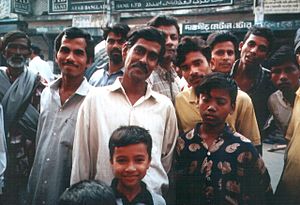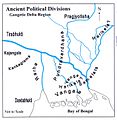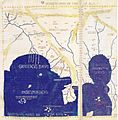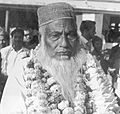Bengali people facts for kids

The Bengali people are a large group of people who mostly live in a region called Bengal in South Asia. This area is now split into two parts: Bangladesh and the Indian states of West Bengal and Tripura. Bengalis speak a language called Bengali (বাংলা Bangla). It's part of the Indo-Aryan language family.
Many Bengalis live in Bangladesh and the Indian states of West Bengal and Tripura. You can also find well-known Bengali communities in the Middle East, Japan, Malaysia, United Kingdom, and United States.
Contents
A Look at Bengali History
Ancient Times in Bengal
The Bengal region has a very long history, going back about 4,000 years. Early people who settled here included Dravidian, Tibeto-Burman, and Austroasiatic groups. No one is completely sure where the name Bangla or Bengal came from. However, many believe it came from a Dravidian-speaking tribe called Bang. This tribe settled in the area around 1000 BC.
Early Kingdoms and Empires
Later, people called Indo-Aryans arrived. The first mentions of kingdoms in Bengal appeared in an ancient book called the Atharvaveda around 1000 BC. From the 6th century BC, a powerful kingdom called Magadha grew. It eventually included most of the Bihar and Bengal regions. Magadha was one of the four main kingdoms in India during the time of Buddha.
Magadha became very large, covering almost all of South Asia. It even included parts of Persia and Afghanistan. The kingdom reached its biggest size under the Buddhist emperor Ashoka the Great in the 3rd century BC.
Bengal in Greek Writings
One of the earliest mentions of Bengal by people from other lands comes from the Greeks. Around 100 BC, they wrote about a land called Gangaridai. This land was ruled by a king named Xandrammes. People think the name Gangaridai might come from Gangahrd. This means "Land with the Ganges in its heart," referring to an area in Bengal. Later, from the 3rd to the 6th centuries AD, the kingdom of Magadha was the center of the Gupta Empire.
Images for kids
-
Parts of the Charyapada, a collection of ancient Buddhist hymns which mention the Bengalis, in display at the Rajshahi College Library.
-
Depiction of Gangaridai on a map by 11th-century polymath Ptolemy.
-
Ghazi Pir is thought to have lived in the Sundarbans some time between the 12th to 13th century.
-
The Bengali artillery at the Battle of Plassey in 1757.
-
A Bengali woman in Dhaka clad in fine Bengali muslin, 18th century.
-
W.C. Bonnerjee, co-founder and first president of Indian National Congress.
-
Abdul Hamid Khan Bhashani, the co-founder and inaugural president of the Awami League.
-
Dean Mahomed is credited for introducing shampoo to the Europeans.
-
Large numbers of Bengalis have settled and established themselves in Banglatown.
-
I'tisam-ud-Din was the first educated Bengali and South Asian to have travelled to Europe.
-
Bengali schoolboys in the port city of Chittagong.
-
Eid prayers in Dhaka.
-
Durga Puja in Kolkata.
-
A sculpture of the Nawab of Bengal's Royal Peacock Barge in Murshidabad.
-
Artistes from Purulia district of West Bengal performs Chhau dance
-
Satyajit Ray, eminent film director who has made Bengali films popular all over the world
-
Gitanjali intro featuring its author Rabindranath Tagore
-
The application of mehndi onto one's hand hosts a ceremony of itself during Bengali wedding seasons.
-
Qazi Azizul Haque is recognised for his contributions to the development of modern fingerprint biometrics, a discovery of worldwide importance.
-
Meghnad Saha, J C Bose, J C Ghosh, Snehamoy Dutt, S N Bose, D M Bose, N R Sen, J N Mukherjee, N C Nag
-
A sculpture honoring Fazlur Rahman Khan at the Willis Tower
-
A lathi khela event taking place in Tangail.
-
Cricketer Shakib Al Hasan is currently crowned the world's best all-rounder in all formats for ODI cricket, and one of the greatest of all times.
See also
 In Spanish: Pueblo bengalí para niños
In Spanish: Pueblo bengalí para niños



































